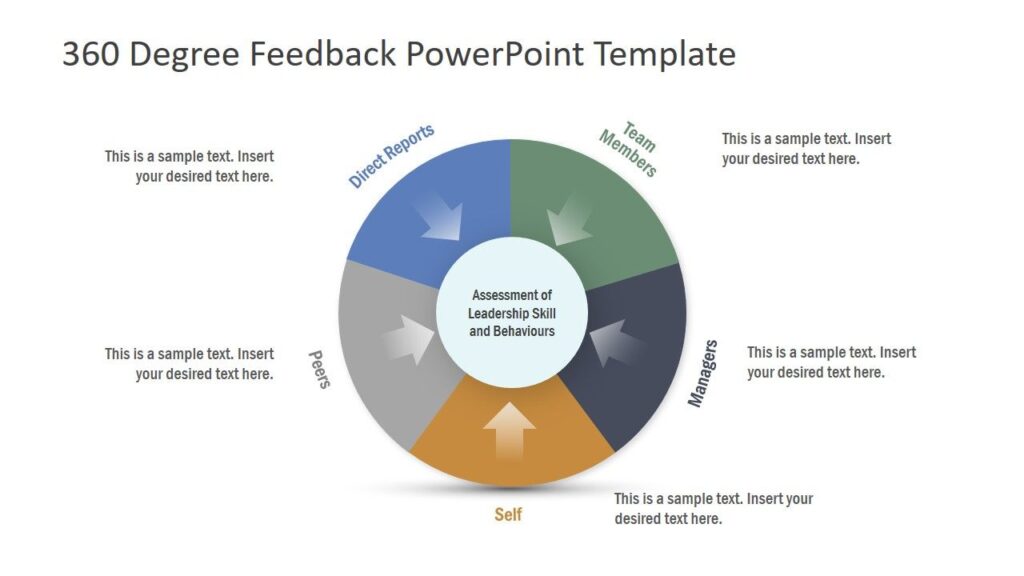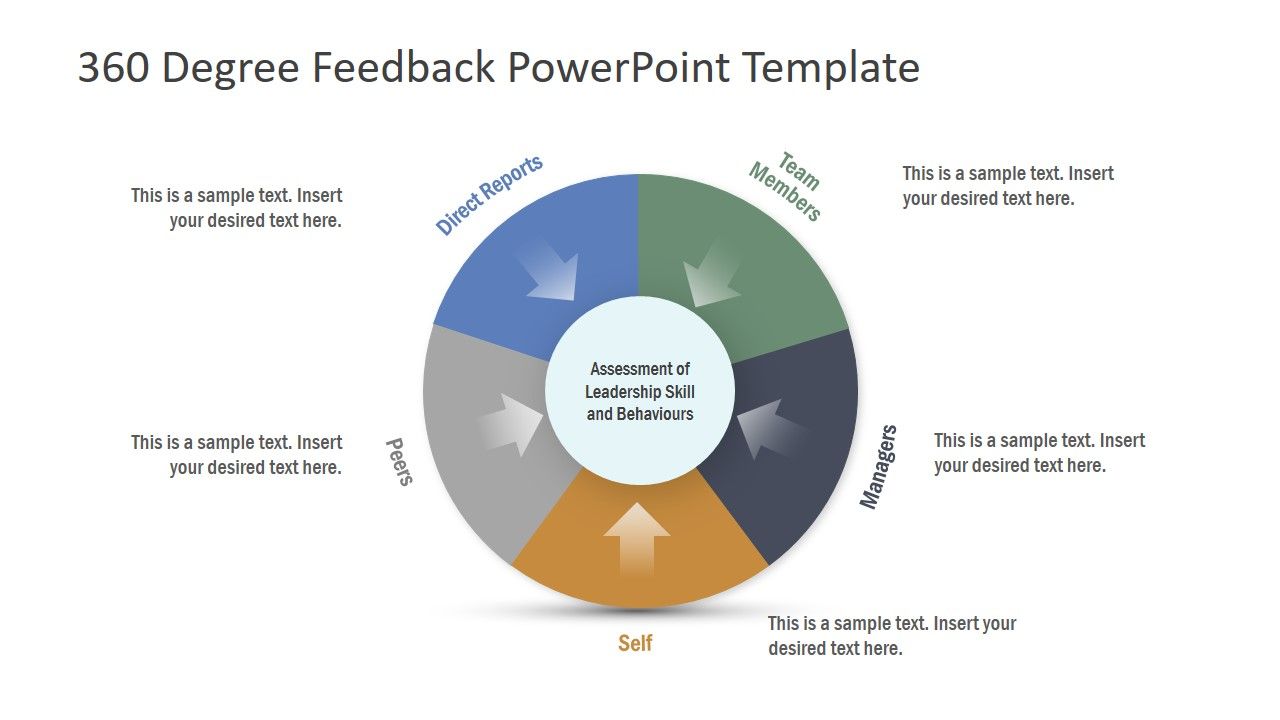
Unlock Peak Performance: A Comprehensive Guide to 360 Degree Review Templates
In today’s dynamic business environment, traditional performance reviews are often insufficient to provide a complete picture of an employee’s contributions and development needs. A 360 degree review template offers a more holistic approach, gathering feedback from multiple sources – supervisors, peers, subordinates, and even clients – to create a comprehensive performance assessment. This multi-faceted perspective provides invaluable insights, fostering individual growth and organizational improvement. This article delves into the intricacies of 360 degree review templates, exploring their benefits, key components, implementation strategies, and best practices for maximizing their impact. A well-designed 360 degree review template is a crucial tool for any organization looking to develop its talent and achieve its strategic goals.
What is a 360 Degree Review?
A 360 degree review, also known as multi-rater feedback, is a performance appraisal method that solicits input from various stakeholders who interact with an employee. Unlike traditional performance reviews, which primarily rely on a manager’s assessment, 360 degree reviews provide a broader and more balanced perspective. This comprehensive feedback mechanism offers employees a clearer understanding of their strengths, weaknesses, and areas for improvement, leading to more targeted development plans.
Benefits of Using a 360 Degree Review Template
Implementing a 360 degree review template offers numerous advantages for both employees and the organization as a whole:
- Improved Self-Awareness: Employees gain a deeper understanding of how their behavior and performance are perceived by others.
- Enhanced Performance: Constructive feedback from multiple sources helps employees identify areas for improvement and develop strategies to enhance their performance.
- Strengthened Teamwork: The process encourages open communication and collaboration among team members.
- Increased Employee Engagement: Employees feel valued when their opinions are sought and their contributions are recognized.
- Fairer Performance Appraisals: Reducing bias by using multiple perspectives.
- Identification of Training Needs: Pinpointing skill gaps that can be addressed through targeted training programs.
- Leadership Development: Providing leaders with valuable insights into their leadership style and effectiveness.
- Organizational Development: Gaining insights into organizational culture and identifying areas for improvement at a systemic level.
Key Components of an Effective 360 Degree Review Template
A well-structured 360 degree review template is essential for gathering meaningful and actionable feedback. Here are the key components to consider:
- Clear Instructions: Provide clear and concise instructions for raters on how to complete the evaluation.
- Behavioral Anchors: Use specific behavioral examples to illustrate each rating scale point, ensuring consistency and accuracy.
- Competency-Based Questions: Focus on key competencies relevant to the employee’s role and the organization’s goals.
- Open-Ended Questions: Include open-ended questions to allow raters to provide detailed and qualitative feedback.
- Confidentiality Assurance: Guarantee anonymity for raters to encourage honest and candid feedback.
- Rating Scales: Employ a consistent rating scale (e.g., 1-5, 1-7) to quantify feedback and facilitate comparison.
- Demographic Information: Collect demographic information about raters (e.g., relationship to the employee, department) for analysis purposes.
- Areas for Improvement: Dedicated section for raters to suggest areas of improvement.
Designing Your 360 Degree Review Template
Creating an effective 360 degree review template requires careful planning and consideration of your organization’s specific needs and goals. Here’s a step-by-step guide:
- Define Objectives: Clearly define the objectives of the 360 degree review process. What do you hope to achieve? What information are you seeking to gather?
- Identify Key Competencies: Identify the key competencies that are critical for success in the employee’s role. These competencies should align with the organization’s values and strategic goals.
- Develop Questions: Develop questions that are specific, measurable, achievable, relevant, and time-bound (SMART). Use behavioral anchors to provide clear examples of each rating scale point.
- Choose a Rating Scale: Select a rating scale that is appropriate for your organization. A common scale is a 5-point or 7-point Likert scale.
- Design the Template: Design the template in a user-friendly format. Ensure that the instructions are clear and concise.
- Pilot Test: Pilot test the template with a small group of employees to identify any areas for improvement.
- Refine the Template: Refine the template based on the feedback from the pilot test.
Implementing a 360 Degree Review Process
Implementing a successful 360 degree review process requires careful planning and execution. Here are some key steps to follow:
- Communicate the Purpose: Clearly communicate the purpose of the 360 degree review process to all participants. Explain the benefits and how the feedback will be used.
- Select Raters Carefully: Choose raters who have sufficient knowledge of the employee’s performance and behavior. Include a diverse group of stakeholders, such as supervisors, peers, subordinates, and clients.
- Provide Training: Provide training to both employees and raters on how to participate in the 360 degree review process. Explain the importance of providing honest and constructive feedback.
- Ensure Confidentiality: Guarantee anonymity for raters to encourage honest and candid feedback.
- Collect Feedback: Collect feedback using a secure and confidential platform.
- Analyze Feedback: Analyze the feedback to identify patterns and trends.
- Provide Feedback to Employees: Provide employees with a summary of the feedback, highlighting their strengths and areas for improvement.
- Develop Action Plans: Work with employees to develop action plans based on the feedback. These plans should include specific, measurable, achievable, relevant, and time-bound (SMART) goals.
- Follow Up: Follow up with employees to track their progress and provide ongoing support.
Best Practices for Maximizing the Impact of 360 Degree Reviews
To maximize the impact of 360 degree reviews, consider these best practices:
- Focus on Development: Emphasize the developmental aspects of the 360 degree review process. Frame it as an opportunity for growth and improvement, rather than a punitive measure.
- Use a Competency-Based Approach: Focus on key competencies that are relevant to the employee’s role and the organization’s goals.
- Provide Clear and Specific Feedback: Encourage raters to provide clear and specific feedback, supported by concrete examples.
- Ensure Confidentiality: Guarantee anonymity for raters to encourage honest and candid feedback.
- Train Raters and Employees: Provide training to both raters and employees on how to participate in the 360 degree review process.
- Use Technology: Leverage technology to streamline the 360 degree review process and make it more efficient.
- Follow Up and Monitor Progress: Follow up with employees to track their progress and provide ongoing support.
- Integrate with Other HR Processes: Integrate the 360 degree review process with other HR processes, such as performance management, talent development, and succession planning.
Choosing the Right 360 Degree Review Template Software
Selecting the right 360 degree review template software can significantly streamline the process and enhance its effectiveness. Consider these factors when evaluating software options:
- Customization: Does the software allow you to customize the template to meet your organization’s specific needs?
- Ease of Use: Is the software user-friendly for both employees and raters?
- Reporting Capabilities: Does the software provide comprehensive reporting capabilities to analyze feedback and track progress?
- Integration: Does the software integrate with your existing HR systems?
- Security: Does the software provide adequate security measures to protect confidential data?
- Mobile Accessibility: Is the software accessible on mobile devices?
- Cost: What is the cost of the software, and does it fit within your budget?
Examples of 360 Degree Review Questions
Here are some examples of 360 degree review questions, categorized by competency:
Leadership
- “To what extent does this individual effectively communicate the team’s vision and goals?”
- “How well does this individual motivate and inspire others?”
- “How effectively does this individual delegate tasks and responsibilities?”
Teamwork
- “How well does this individual collaborate with others to achieve common goals?”
- “To what extent does this individual contribute to a positive team environment?”
- “How effectively does this individual resolve conflicts within the team?”
Communication
- “How clearly and effectively does this individual communicate verbally and in writing?”
- “To what extent does this individual actively listen to and understand others?”
- “How well does this individual provide constructive feedback to others?”
Problem Solving
- “How effectively does this individual identify and analyze problems?”
- “To what extent does this individual develop creative and innovative solutions?”
- “How well does this individual implement solutions and monitor their effectiveness?”
The Future of 360 Degree Reviews
The future of 360 degree reviews is likely to be shaped by technology and data analytics. We can expect to see more sophisticated software solutions that leverage artificial intelligence and machine learning to analyze feedback and provide personalized development recommendations. Additionally, there will be a greater emphasis on continuous feedback and real-time performance insights. [See also: Performance Management Software Trends] The 360 degree review process will continue to evolve, becoming more agile, data-driven, and focused on individual growth and organizational performance.
Conclusion
A well-designed and implemented 360 degree review template can be a powerful tool for enhancing employee performance, fostering teamwork, and driving organizational success. By gathering feedback from multiple sources, organizations can gain a more comprehensive and accurate understanding of their employees’ strengths and weaknesses, leading to more targeted development plans and improved overall performance. Embracing the principles and best practices outlined in this guide will enable organizations to unlock the full potential of their talent and achieve their strategic goals. Using a robust 360 degree review template is no longer a luxury, but a necessity for organizations committed to continuous improvement and employee development.

